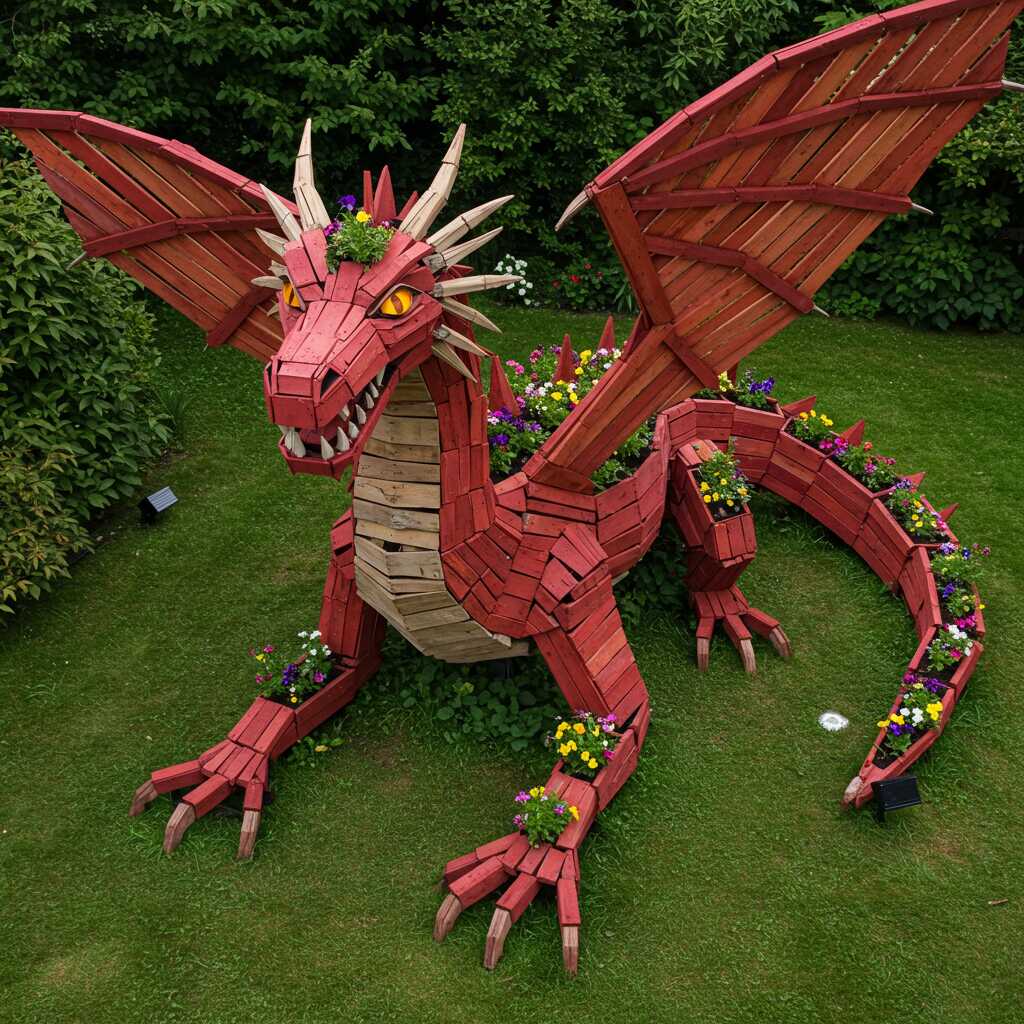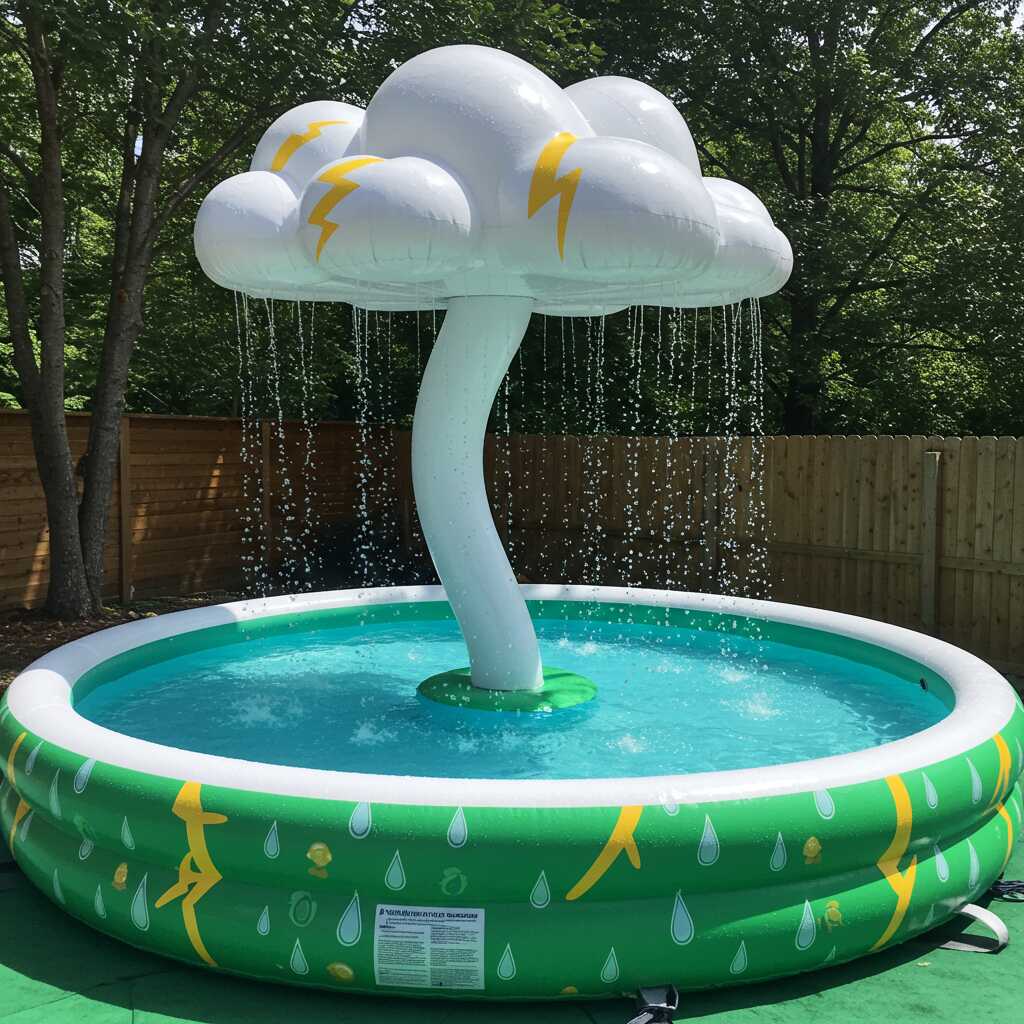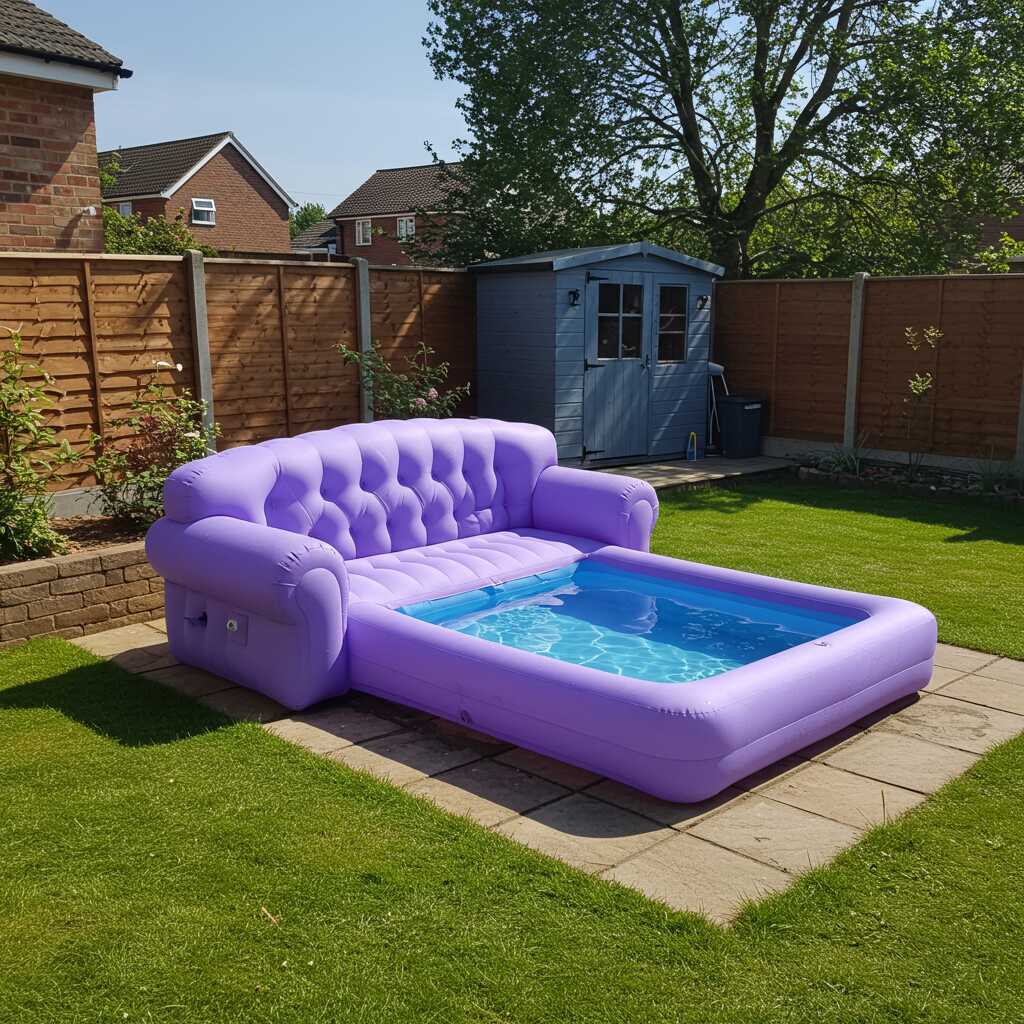In recent years, the world of garden design has witnessed a fascinating evolution, marked by an increasing integration of mythical and fantastical elements into outdoor spaces. Among these emerging trends, the incorporation of dragon-inspired planters has captured the imagination of gardening enthusiasts worldwide. This surge in popularity reflects a broader cultural fascination with dragons that transcends traditional boundaries between fantasy and reality. As homeowners and landscape architects seek to infuse their green spaces with unique character and personality, these majestic creatures have emerged as powerful symbols of transformation and vitality in modern garden environments.
The appeal of dragon shaped planters extends far beyond mere aesthetics; they represent a harmonious blend of ancient symbolism and contemporary design sensibilities. These sculptural elements draw inspiration from diverse mythological traditions, where dragons have long been revered as protectors, guardians, and embodiments of natural forces. In garden settings, they serve not only as functional vessels for nurturing plant life but also as artistic statements that bridge different cultural narratives and historical periods. Their presence transforms ordinary planting arrangements into captivating focal points that invite contemplation and wonder.
This growing trend reflects a significant shift in how people perceive and interact with their outdoor spaces. Modern gardeners are increasingly seeking ways to create environments that tell stories and evoke emotions, moving away from conventional planting approaches toward more imaginative and personalized designs. Dragon-inspired planters perfectly align with this desire for meaningful expression, allowing individuals to craft gardens that reflect their personal interests while simultaneously paying homage to timeless mythological themes. The versatility of these designs enables them to complement various garden styles, from traditional formal arrangements to whimsical cottage gardens and contemporary minimalist landscapes.
Moreover, the rise of dragon-shaped planters speaks to a deeper cultural movement toward embracing fantasy and mythology in everyday life. As urbanization continues to expand, people are finding solace and inspiration in connecting with magical elements through their home environments. These planters offer a tangible way to bring mythical creatures into the real world, creating a bridge between imagination and physical space that resonates deeply with those seeking to escape the mundane aspects of daily life while maintaining a connection to nature.

Ancient Symbolism Meets Modern Design: The Evolution of Dragon-Inspired Planters
The journey of dragon-inspired planters from ancient mythological motifs to contemporary garden features is a fascinating narrative of cultural adaptation and artistic innovation. Historically, dragons have occupied a complex position in global folklore, ranging from benevolent water spirits in Eastern traditions to formidable fire-breathing beasts in Western mythology. This rich tapestry of cultural interpretation has directly influenced the design language of modern dragon-shaped planters, resulting in creations that often blend elements from multiple traditions. For instance, many contemporary designs incorporate the serpentine grace of Chinese dragons with the dramatic wings and scales characteristic of European depictions, creating hybrid forms that speak to our globalized understanding of these mythical creatures.
Artistic representation plays a crucial role in elevating dragon-shaped planters beyond mere functional objects. Contemporary designers have embraced various artistic movements and techniques to create pieces that transcend their practical purpose. Some artisans employ traditional ceramic methods reminiscent of ancient pottery, while others utilize modern materials like fiberglass or recycled plastics to achieve intricate details and durable construction. The interplay between form and function becomes particularly evident in the way these planters are designed to accommodate vegetation while maintaining their sculptural integrity. Strategic placement of planting areas within the dragon’s body – whether coiled around its tail, sprouting from its back, or emerging from its mouth – demonstrates sophisticated design thinking that balances aesthetic appeal with horticultural requirements.
Cultural significance manifests in numerous subtle ways throughout the design process. East Asian-influenced planters often feature auspicious colors like red and gold, incorporating symbolic elements such as clouds or pearls traditionally associated with dragons in regional mythology. Conversely, Nordic-inspired designs might emphasize rugged textures and earthy tones, reflecting the harsh northern landscapes from which these legends emerged. Some designers even incorporate specific cultural motifs directly into the planter’s surface treatment, using techniques like bas-relief carving or mosaic work to tell visual stories through their creations.
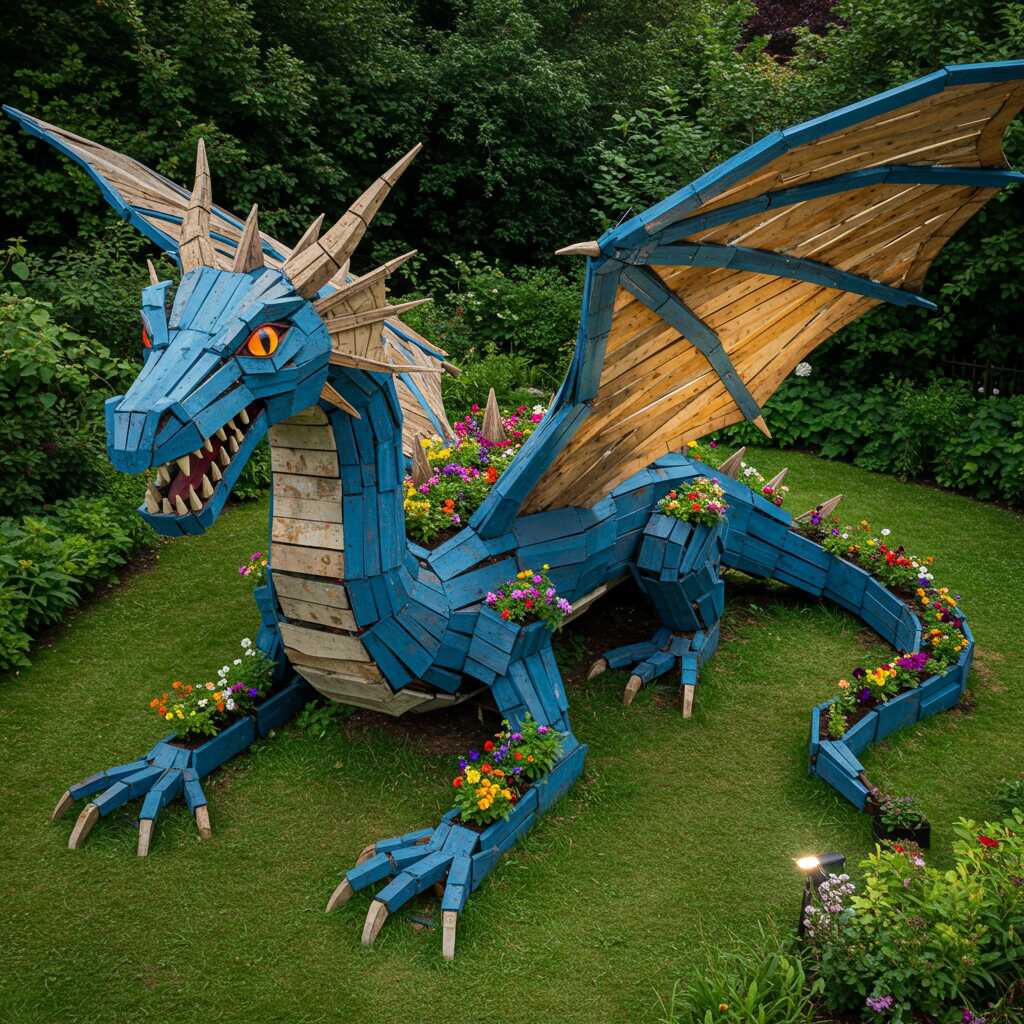
The evolution of these planters also reflects changing attitudes toward public art and private decoration. What was once considered purely decorative now serves multiple functions in modern gardens. The scale and positioning of dragon-shaped planters have expanded beyond small patio accents to include large-scale installations that define entire garden spaces. This shift parallels the growing appreciation for environmental art and the blurring lines between sculpture and functional garden elements. Many contemporary designs deliberately challenge traditional notions of what constitutes a planter, incorporating water features, lighting elements, or kinetic components that respond to wind or touch, transforming static sculptures into dynamic garden features.
Material innovation has played a pivotal role in shaping the modern interpretation of dragon-inspired planters. Advances in manufacturing techniques have enabled designers to push creative boundaries while maintaining structural integrity. Lightweight composite materials allow for larger, more ambitious designs without compromising durability, while 3D printing technology has opened new possibilities for intricate detailing that would be impossible to achieve through traditional methods. These technological advancements have democratized access to high-quality designs, enabling more gardeners to incorporate these mythical creatures into their landscapes regardless of space or budget constraints.
Perhaps most significantly, the development of dragon-shaped planters reflects a broader cultural shift toward viewing gardens as spaces for personal storytelling and emotional connection. Each design choice – from the dragon’s posture and expression to its color palette and texture – contributes to a narrative that resonates with both creator and observer. This intentional blending of mythological heritage with contemporary design sensibilities ensures that dragon-inspired planters remain relevant and compelling additions to modern garden spaces, serving as bridges between ancient symbolism and current aesthetic preferences.
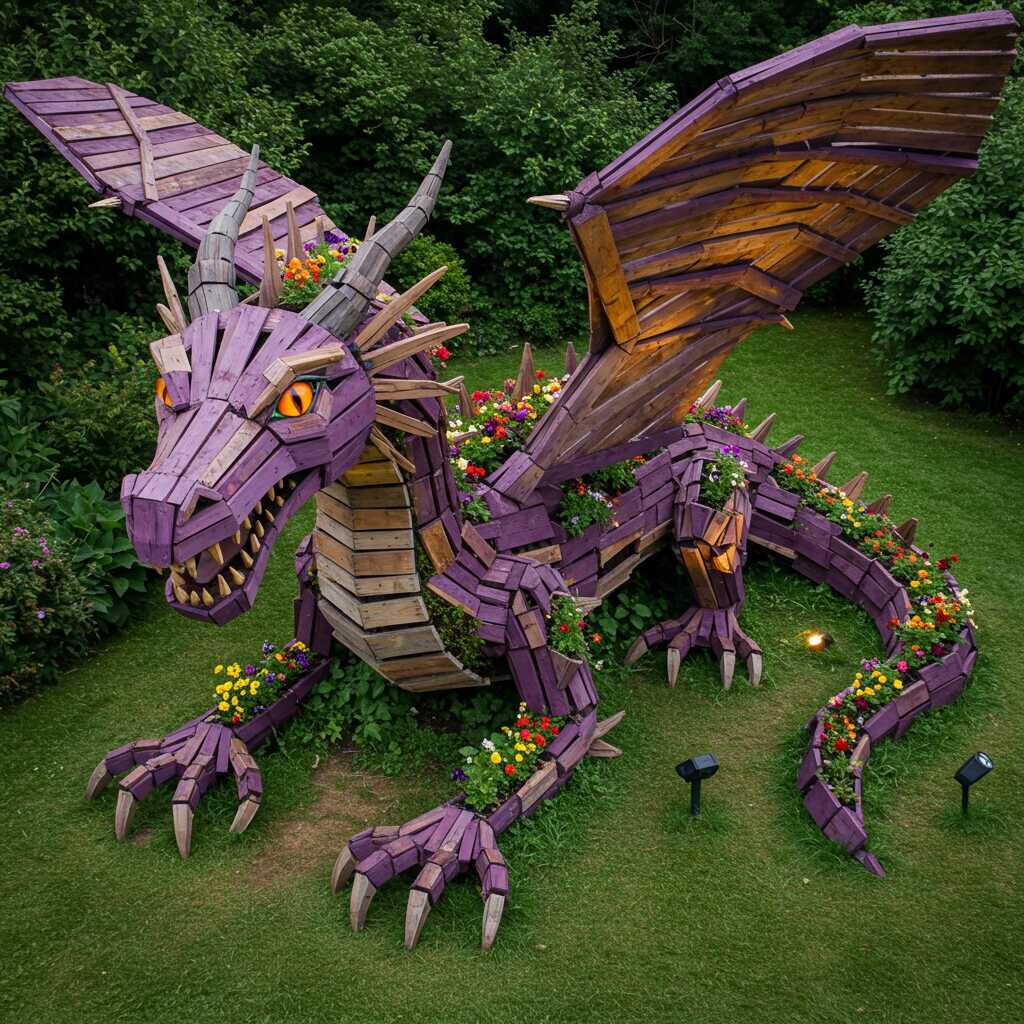
Design Innovation and Practical Application: Maximizing the Impact of Dragon Shaped Planters
The integration of dragon-shaped planters into garden design represents a sophisticated fusion of artistic vision and practical functionality. Landscape architects and garden designers have developed innovative strategies for incorporating these distinctive elements into various outdoor spaces, ensuring they enhance rather than overwhelm the surrounding environment. One of the most effective approaches involves strategic placement along sightlines and pathways, where the dragon’s form can guide visitors naturally through the garden while maintaining visual interest from multiple vantage points. For instance, positioning a coiled dragon planter at a curve in a winding path creates a sense of discovery, while a standing dragon placed at a vista point draws the eye upward, adding vertical dimension to the landscape composition.
Modern garden design principles emphasize the importance of thematic cohesion, and dragon-shaped planters offer unique opportunities to establish distinct garden personalities. In formal gardens, symmetrical pairs of dragon planters can flank entrances or architectural features, their structured forms complementing geometric planting beds and clipped hedges. Alternatively, in wilder, more naturalistic settings, weathered bronze or stone dragon planters can emerge organically from dense foliage, their textured surfaces blending seamlessly with surrounding plant material. The key to successful integration lies in carefully considering scale and proportion – larger dragon forms work best in expansive spaces or as central features in courtyard gardens, while smaller versions excel as intimate surprises tucked among perennials or shrubs.
Plant selection plays a crucial role in maximizing the visual impact of dragon-shaped planters. Designers often choose cascading plants like ivy, trailing petunias, or creeping thyme to soften the planter’s edges and enhance its organic qualities. For upright dragon forms, tall specimens such as ornamental grasses, dracaenas, or bamboo create striking silhouettes that echo the creature’s majestic posture. Seasonal planting schemes can transform these planters throughout the year, with spring bulbs bursting forth from the dragon’s back, summer annuals creating vibrant displays, and autumn grasses capturing the colors of fall. Some innovative designs even incorporate edible plants, with herbs spilling from strategic openings in the dragon’s form, blending functionality with whimsy.

Lighting considerations significantly enhance the dramatic potential of dragon-shaped planters, especially during evening hours. Subtle up-lighting can accentuate the planter’s sculptural details, casting intriguing shadows that dance across adjacent surfaces. Integrated LED systems embedded within the planter itself can create magical effects, illuminating the dragon’s eyes or highlighting specific planting areas. When positioned near water features, the reflective properties of pools or ponds multiply the visual impact, creating mirror images that double the presence of these mythical creatures in the landscape.
Environmental consciousness has led to innovative adaptations in dragon-shaped planter design, with many contemporary pieces incorporating sustainable features. Some designs include built-in reservoir systems that maximize water efficiency, while others incorporate solar-powered lighting elements or utilize recycled materials in their construction. Certain dragon planters are designed with multiple chambers, allowing for companion planting that benefits pollinators or creates microclimates suitable for sensitive species. These eco-friendly innovations demonstrate how traditional forms can evolve to meet modern environmental challenges while maintaining their artistic integrity.
The versatility of dragon-shaped planters extends to their ability to serve multiple functions within the garden ecosystem. Beyond their primary role as planting vessels, they can act as division markers between different garden zones, provide habitat for beneficial insects when planted with appropriate species, or even serve as trellises for climbing plants. Some designs incorporate water features, with the dragon’s mouth serving as a fountain spout or its body housing a small pond area. These multifunctional capabilities ensure that dragon-shaped planters contribute meaningfully to the overall garden experience while maintaining their status as captivating works of art.
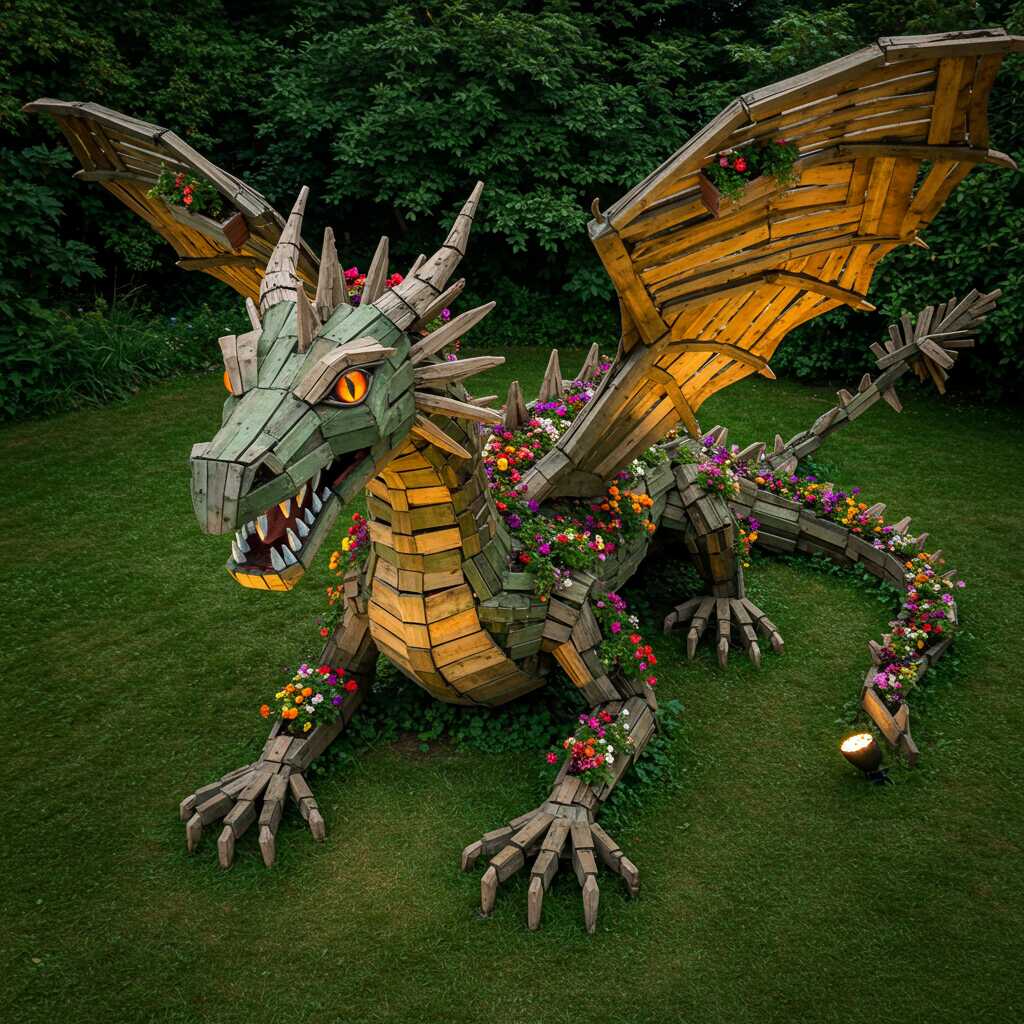
Conclusion: Embracing Myth and Nature Through Innovative Garden Design
The rising prominence of dragon-shaped planters in contemporary garden design represents a profound convergence of cultural heritage, artistic expression, and ecological awareness. These enchanting creations stand as testament to humanity’s enduring fascination with mythical creatures while simultaneously addressing modern needs for meaningful outdoor spaces. Their success lies in their ability to transcend simple categorization as either decorative objects or functional gardening tools, instead occupying a unique niche that celebrates the intersection of imagination and practicality in landscape design. As gardeners continue to seek ways to personalize their outdoor environments, the dragon-shaped planter emerges as a versatile medium through which to explore themes of protection, growth, and transformation.
Looking forward, the evolution of dragon-inspired garden elements promises to unfold in exciting directions, driven by advances in sustainable materials and smart technologies. Future designs may incorporate adaptive features that respond to environmental conditions, such as self-regulating irrigation systems or temperature-sensitive color-changing surfaces. The integration of augmented reality could allow garden visitors to experience additional layers of mythical storytelling through their mobile devices, bringing these ancient creatures to life in unprecedented ways. Moreover, as urban gardening continues to gain momentum, compact and modular dragon planter designs may revolutionize how limited spaces are utilized, offering vertical solutions that maximize both aesthetic impact and planting capacity.
The lasting influence of dragon-shaped planters on garden culture extends beyond their immediate visual appeal. They challenge traditional perceptions of what constitutes appropriate garden ornamentation, encouraging a more inclusive approach to landscape design that embraces fantasy alongside functionality. By bridging the gap between ancient mythology and modern environmental consciousness, these innovative designs inspire gardeners to think more creatively about how their outdoor spaces can tell stories, foster biodiversity, and connect with deeper cultural narratives. As this trend continues to evolve, dragon-shaped planters will undoubtedly remain at the forefront of a movement that seeks to transform gardens into spaces of wonder, reflection, and ecological responsibility.
